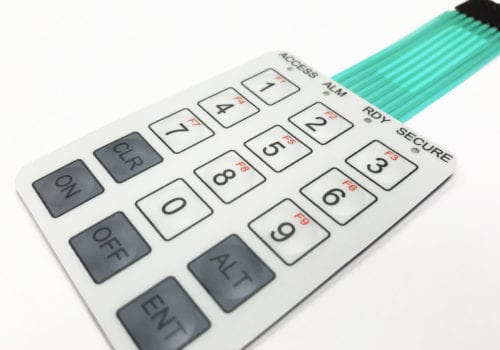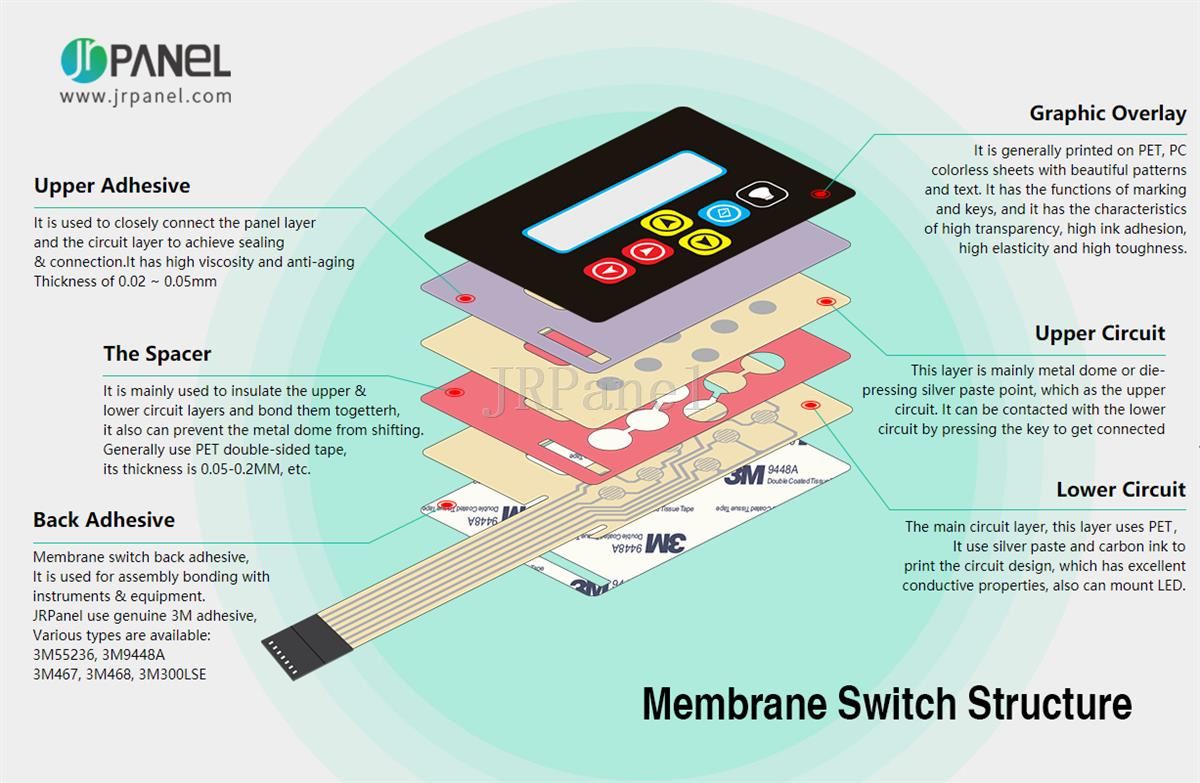Discover Just How a Membrane Switch Enhances Longevity and Functionality in Tools
Discover Just How a Membrane Switch Enhances Longevity and Functionality in Tools
Blog Article
Comprehending the Performance of Membrane Layer Changes for Interface Devices
The performance of membrane switches stands for a substantial innovation in interface design, incorporating effectiveness with aesthetic versatility. These switches run via a multi-layered framework that translates customer interactions right into electrical signals, allowing for both compact layouts and strength against ecological factors. As sectors increasingly prioritize customer experience, understanding the nuances of membrane switch innovation becomes crucial. What implications do these improvements hold for future applications, and exactly how might they redefine customer interactions across various tools?
What Are Membrane Buttons?
Membrane buttons are cutting-edge user interface gadgets that promote individual interaction with digital equipment. These flexible parts contain numerous layers, including a graphic overlay, spacer, and a printed circuit layer. The design enables for a seamless assimilation into different electronic gadgets, enhancing both the visual and practical elements of interface.
Membrane switches are typically utilized in a wide variety of applications, from home devices to commercial machinery and medical gadgets. Their construction normally includes a slim profile, making them an optimal option for compact designs. The tactile responses supplied by these switches can be crafted to fulfill certain user choices, ensuring effective interaction in between the individual and the gadget.
Longevity is another substantial advantage of membrane buttons, as they are immune to dirt, dampness, and chemicals, which enhances their lifespan sought after environments. In addition, these buttons can be personalized in regards to form, size, and graphic style, permitting for branding and user-specific functions. In general, membrane layer switches represent a useful solution for improving individual experience in electronic gadgets, integrating performance with visual charm in an effective fashion.
Just How Membrane Layer Switches Over Job
Operating on a simple concept, membrane layer changes utilize a layered building to register customer input successfully. Each button contains multiple layers, including a printed circuit layer, a spacer layer, and a leading graphic layer, which are created to interact perfectly. When a customer presses the leading layer, it compresses the spacer layer, bringing the conductive aspects of the circuit layer right into call with each other.
This call produces a closed circuit, signaling the device to carry out a particular feature. The style permits various setups, consisting of responsive feedback, which can improve the customer experience by offering a physical sensation upon activation. The products used in membrane layer switches often consist of adaptable substratums, such as polyester or polycarbonate, which ensure resilience and resilience versus deterioration.

Trick Advantages of Membrane Buttons

One more considerable advantage is their density. Membrane layer switches are thin and lightweight, which allows producers to conserve area in their gadgets without compromising performance. This attribute is particularly advantageous in applications where weight and quantity are vital considerations.
In addition, membrane layer switches are immune to dust, moisture, and chemicals, improving their toughness. This strength expands their life-span and minimizes the need for frequent substitutes, causing cost more financial savings with time.
Moreover, the responsive responses supplied by membrane layer buttons can be enhanced to enhance individual interaction. They can include functions such as raised buttons or distinct clicks, enhancing use and user experience.
Applications Across Industries
Interface tools making use of membrane layer buttons prevail in a wide selection of sectors, showcasing their flexibility and performance. Membrane Switch. In the clinical field, membrane buttons are indispensable to tools such as analysis devices and client tracking systems, where their durability and convenience of cleaning are critical for keeping hygiene standards. In the auto industry, these buttons are employed in control panel controls and infomercial systems, offering a smooth and modern user interface for customers.
Furthermore, the consumer electronics field take advantage of membrane buttons in appliances and handheld tools, where portable style and easy to use interfaces improve user experience. Industrial applications also leverage membrane layer switches over for control panels in equipment and automation systems, stressing their toughness and resistance to extreme environments.
In the aerospace and protection industries, membrane layer buttons are used in cabin controls and devices, where integrity and efficiency under severe problems are paramount. Additionally, the gaming market increasingly integrates membrane layer switches in controllers and game devices, contributing to an engaging individual experience. Generally, the versatility of membrane layer switches allows their extensive use across countless markets, underscoring their value in modern-day interface style.
Future Trends in Membrane Layer Switch Over Modern Technology

Furthermore, making use of sophisticated products, such as polycarbonate and polyester films, is anticipated to increase, supplying improved longevity and resistance to ecological stress factors. These materials add to the overall durability of membrane switches, making them ideal for harsher commercial applications.
In addition, the unification of clever technology, consisting of IoT connectivity, will enable membrane buttons to interact with various other gadgets and systems, assisting in a more interactive user experience. This trend aligns with the growing need for clever devices throughout various industries, from medical care to customer electronic devices.
Last but not least, personalization choices are anticipated to expand, enabling makers to produce bespoke options tailored to particular customer needs and choices. These advancements will place membrane buttons as important parts in the advancement of interface innovation.
Conclusion
Finally, membrane layer changes represent a critical advancement in user interface technology, using a reputable and flexible option for diverse digital applications. Their split construction helps with portable design, while attributes such as responsive feedback improve individual interaction. The toughness versus ecological factors better solidifies their utility throughout multiple industries. As innovations in product science and touch picking up innovations continue, the functionality and applicability of membrane buttons are anticipated to increase, strengthening their significance in contemporary digital devices.
Report this page